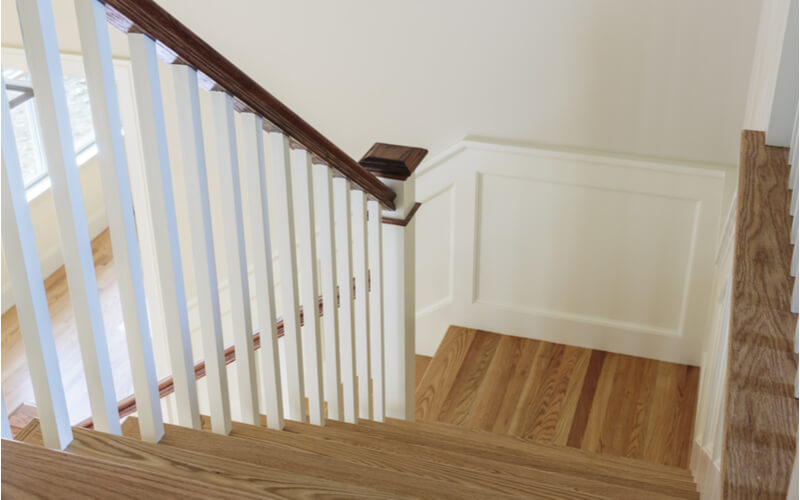When it comes to replacing or building new stairs in or outside of your home, it’s best left to the professionals. While you can have a say in the overall staircase design, for the material, sizing, and safety features you should consult with a certified stair builder. They have the knowledge to safely construct the stairs with building codes and safety regulations in mind. Read more to learn about the different types of stairs and materials that a carpenter can help you build.
Here’s a list of 6 different types of stairs a carpenter can help you build…
-
Straight
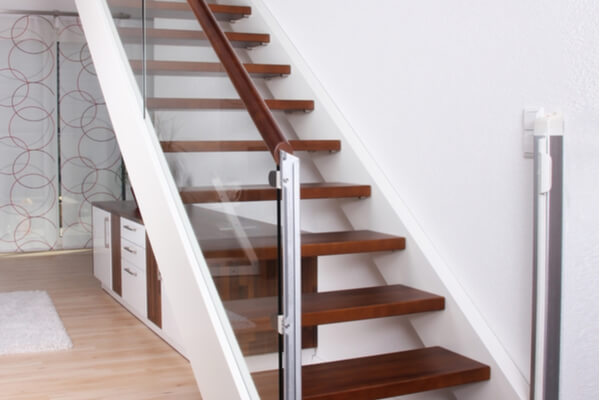
Straight staircases are exactly what they sound like – straight. This flight of stairs does not include any changes of direction however, it can include multiple landings depending on the length of the stairs. Straight stairs are often used in homes where the width of the area is restricted.
2. L-Shaped
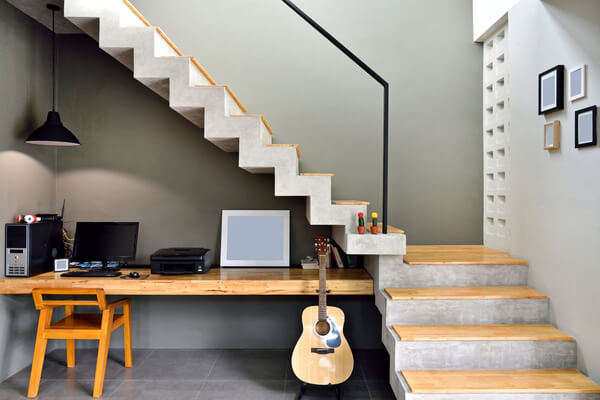
L-shaped staircases are similar to that of a straight staircase except at some point the staircase makes a 90-degree turn (in either direction available). L-shaped stairs are one of the most common types of stairs used in residential homes. Typically staircases are built parallel to the home, in which a landing is needed to enter the staircase. If the landing is composed of more stairs, this is commonly referred to as winders.
3. U-Shaped
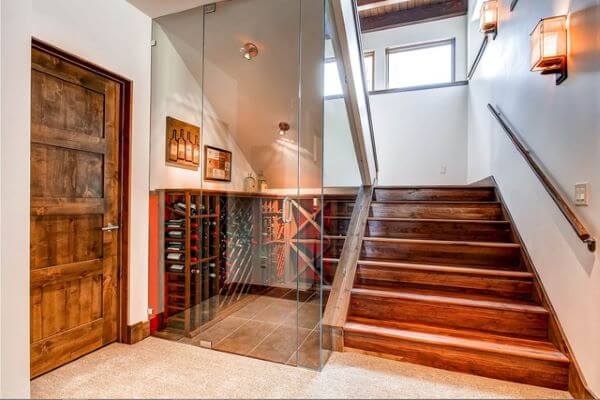
Image courtesy of AGM Renovations
U-shaped stairs are similar to L-shaped, but rather than a 90-degree turn, the staircase makes a 180-degree turn. A landing is used to separate the two flights (or more) of stairs. Similar to the L-shaped staircase, these stairs can be installed in a corner and also take up less linear space than straight stairs.
AGM Renovations constructed this beautiful U-Shaped staircase with a built-in wine cellar to fill the space underneath the upper stairs. Head to their HomeStars profile to check out more of their amazing work!
4. Curved
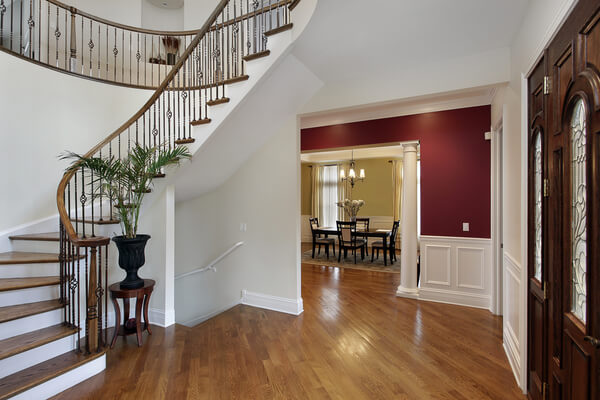
Curved staircases do not include any landings and have continuous stairs from top to bottom. The flow of the stairs make this style the most aesthetically pleasing and easy to climb, however they are the hardest stairs to construct.
5. Spiral
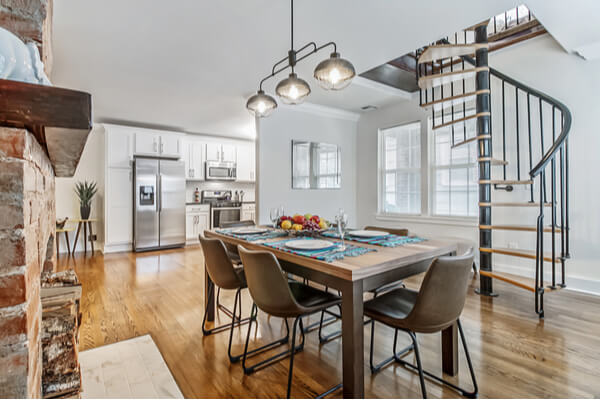
Similar to a curved staircase is a spiral staircase. These staircases are not the easiest to climb, but they do make a statement! They also take up the least amount of space and are good for smaller areas.
6. Accessible Stairs
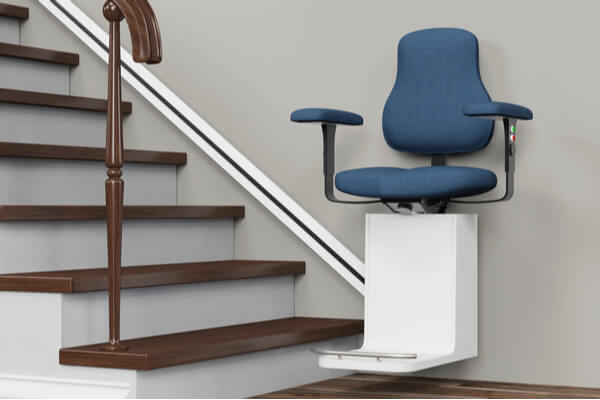
There are a variety of ways in which a staircase can be made accessible. Accessibility ramps, both indoors and outdoors, can be installed alongside your steps or stairs. Threshold ramps can be placed and moved around to accommodate different steps around the home.
For full staircases, stairlifts can be installed from top to bottom to allow for easy assistance travelling up and downstairs. Stairlifts are able to accommodate all types of stairs, from straight to curved, and with and without landings.
Stairs can also be constructed with deeper treads (foot of the stair) and lower risers (height of the stair) to accommodate the use of walkers. Making these adjustments allows the walker to fit comfortably on the stair and the shorter heights make it easier to navigate.
Additional railings and support can also be added to your stairs or surrounding walls to offer more guidance and support while climbing or descending the stairs.
Railings
To complete the construction, a stair railing is almost always required for the project to meet code requirements. A railing, or a handrail, not only completes the look of the staircase, but they provide support and safety in the event of a trip or fall.
The two most common types of railing styles are integrated and wall-mounted. Integrated railings are built into the staircase, connecting either directly with the stair footing (baluster design) or connecting with a horizontal rail at the bottom (spindle design). Wall-mounted railings are not connected to the base of the stairs, but rather to the wall.
Types of Materials To Build an Indoor Staircase
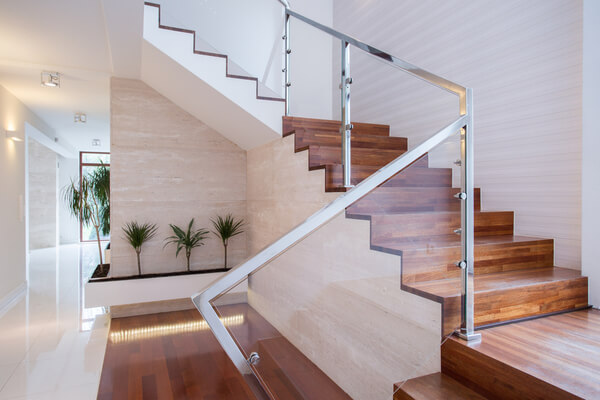
The material that you use to build your stairs and railings is going to depend on the environment and use of the stairs. Most interior stairs are constructed from wood, but other popular materials are natural stone, concrete steps, metal, steel, and glass. It’s best to consult with a professional to see which material is best for your space. Additionally, interior design experts can help you select materials and styles for your railings to stand out or blend in.
Below are the average costs of stair building projects across different cities in Canada:
| City | Average | Minimum | Maximum |
| Calgary | $2,000 | $2,000 | $2,000 |
| Edmonton | $10,873 | $500 | $38,000 |
| Toronto | $8,436 | $470 | $40,000 |
| Vancouver | $6,823 | $290 | $15,000 |
*Costs based on 196 verified Canadian homeowner reviews as of March 2022
If you’re looking to install new stairs, make additions to your current stairs, or are moving stairs in your home be sure to connect with an experienced professional to help you choose the right style and materials for your space. It’s important to have the stairs built properly to ensure the safety of your home and your family.
